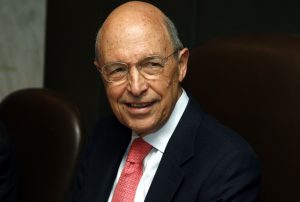“It isn’t necessary to imagine the world ending in fire or ice—there are two other possibilities: one is paperwork, and the other is nostalgia.” So wrote musician Frank Zappa (1940-93) in his 1989 memoir, “The Real Frank Zappa Book.” I was never sure what he meant, but I thought about it in the past few weeks as friends kept sending me videos of Dead & Company—former Grateful Dead band members along with John Mayer—playing at the Sphere in Las Vegas. During one song, the visuals looked as if they were playing inside Barton Hall at Cornell University and at Red Rocks in Colorado. Very nostalgic.
Nostalgia used to be considered a mental illness. The word was coined by Swiss physician Johannes Hofer in the 17th century from nostos (homecoming) and algos (pain). Research now shows that nostalgia lowers cortisol levels associated with stress. It’s healthy!
Maybe that explains our fascination with old homes, Barbie, vinyl records, James Bond, candy corn, pinball, amateur college athletics and—gulp—newspapers. Technology helps nostalgic comic books like Batman and Spider-Man come to life. Plus, not one but two Godzilla movies in the past six months, and the 10th “Planet of the Apes” film.
Meanwhile, live events are big business. Whitney Houston died in 2012 but 10 years later played at Harrah’s Las Vegas—at least her hologram avatar did. In 2019, Roy Orbison ’s hologram went on tour, a new meaning of “Only the Lonely.” If you’re in London, for roughly $150 you can see the band ABBA perform—actually, their “ABBAtars.” Twice on weekends. Mamma mia! A virtual “Elvis Evolution” is coming to Vegas. Finally. We’re all tired of Carrot Top.
Over the years, legions of dorm-room detectives studying hiss-filled cassette tapes on seemingly infinite loop have considered the May 8, 1977 , Grateful Dead show at Barton Hall the band’s greatest. I worked at that show. Was it their peak? Or mine? Has it all been nostalgia since? Even on my iPhone, the virtual Barton Hall effect at the Sphere brought me back. And I’m not a Deadhead. Tickets to that 1977 show cost $7.50, or $39 in today’s dollars. Now you can spend $950 on a VIP package at the Sphere. Wanna bet Vegas dispensaries are doing well? Nostalgia can be lucrative.
Inside the Sphere is a 160,000-square-foot wraparound LED display, enabling a 16K-by-16K resolution, 168,000 speakers and 10,000 subwoofer-like systems in seats—blowing away your 4K television. The video clips from the Sphere reveal a few too many concertgoers with their cellphones out recording the audio—no hiss!—and the spectacular visuals. And the videos were posted online almost in real time, quite the change from 1977, when, if I recall, Barton Hall had one pay phone in the basement.
Technology and artificial intelligence are now at a mind-bending stage of realistic renderings. We’re almost to the point of crossing the uncanny valley so human minds no longer reject simulations. Everything will be re-created. I talked to folks scanning “The Wizard of Oz” frame by frame to create a high-resolution digital model of the set. We’re not in Kansas anymore.
Voice models are good enough now to re-create anyone’s voice. Hollywood’s Creative Artists Agency, along with AI company Veritone , announced a vault for actor voice and image scans. Think of it as a nostalgia nook. Scarlett Johansson , fresh off scolding OpenAI for stealing “Her” voice for ChatGPT-4o, may be first in line. No matter the voice, OpenAI’s detractors are already whining. MSNBC dissed the chatbot as “a creepy fantasy” permitting “endless interruption” of “a flirty woman.” Gimme a break.
Researchers believe nostalgia can be triggered by adversity and loneliness. We all are increasingly isolated behind our lonely glass screens with less real human connection. Experiencing simulations vs. the real thing can bring viewers a sense of helplessness—an unsettling feeling of not being in control. The more technology advances, the more human minds will pine for long-lost simpler times: when we were in control and things made sense.
But in a weird way, the same technology that fulfills our nostalgia may get so good that humans become even lonelier and driven to more nostalgia—a doom loop. “When you compute the length of time between The Event and The Nostalgia For The Event, the span seems to be about a year less in each cycle,” Mr. Zappa wrote. Eventually, “the nostalgia cycles will be so close together that people will not be able to take a step without being nostalgic for the one they just took. At that point, everything stops. Death by Nostalgia.” Or at least Dead & Company by Nostalgia.
Somebody, please create a virtual Frank Zappa. I have questions.
Write to kessler@wsj.com.


